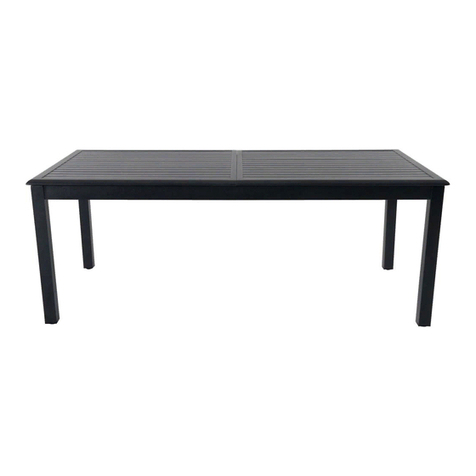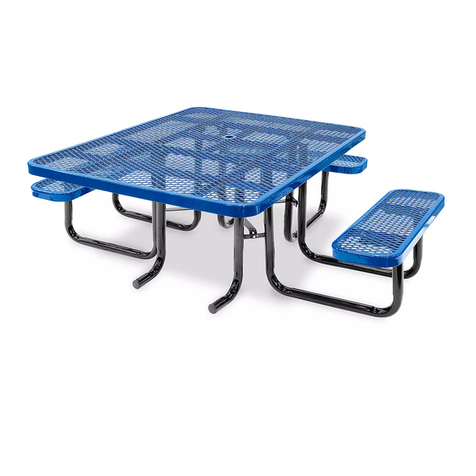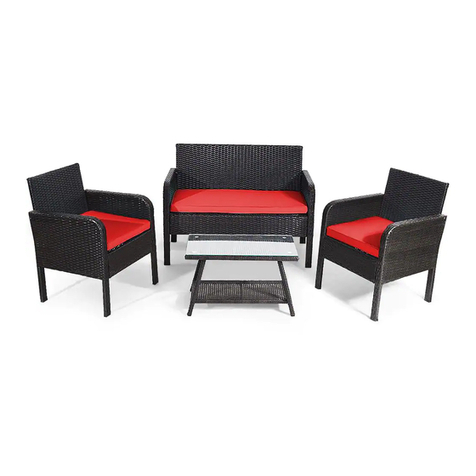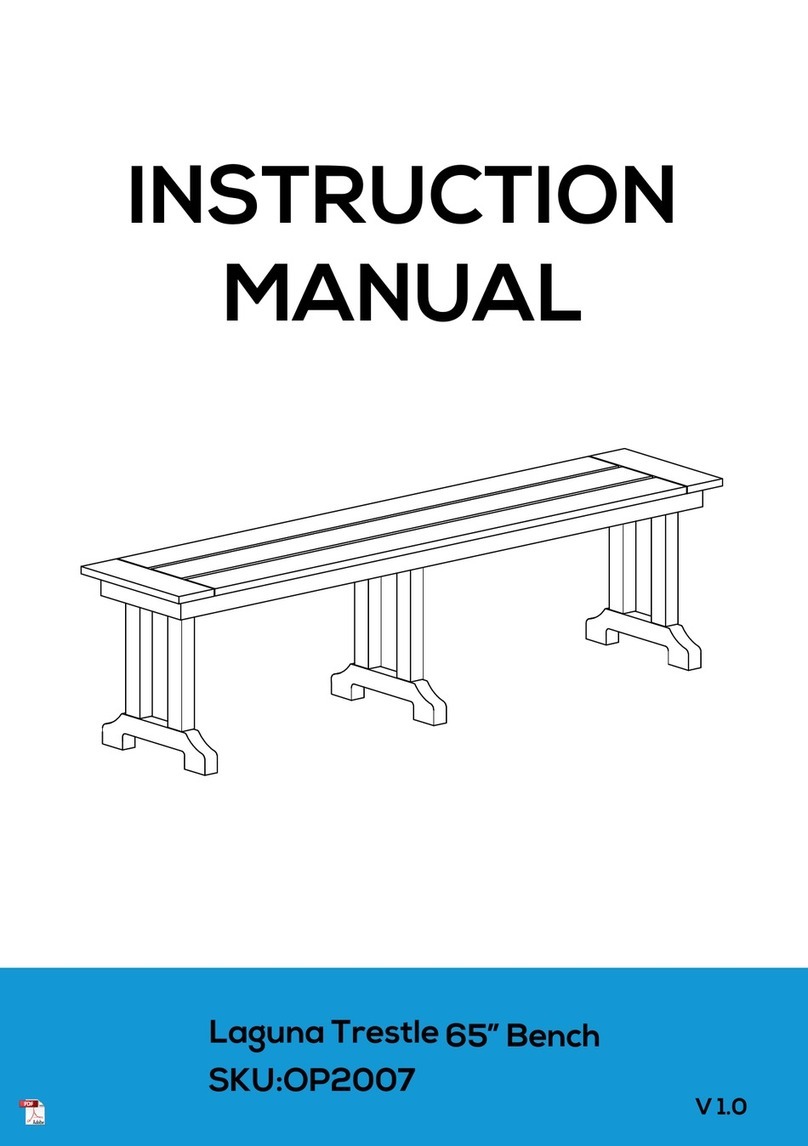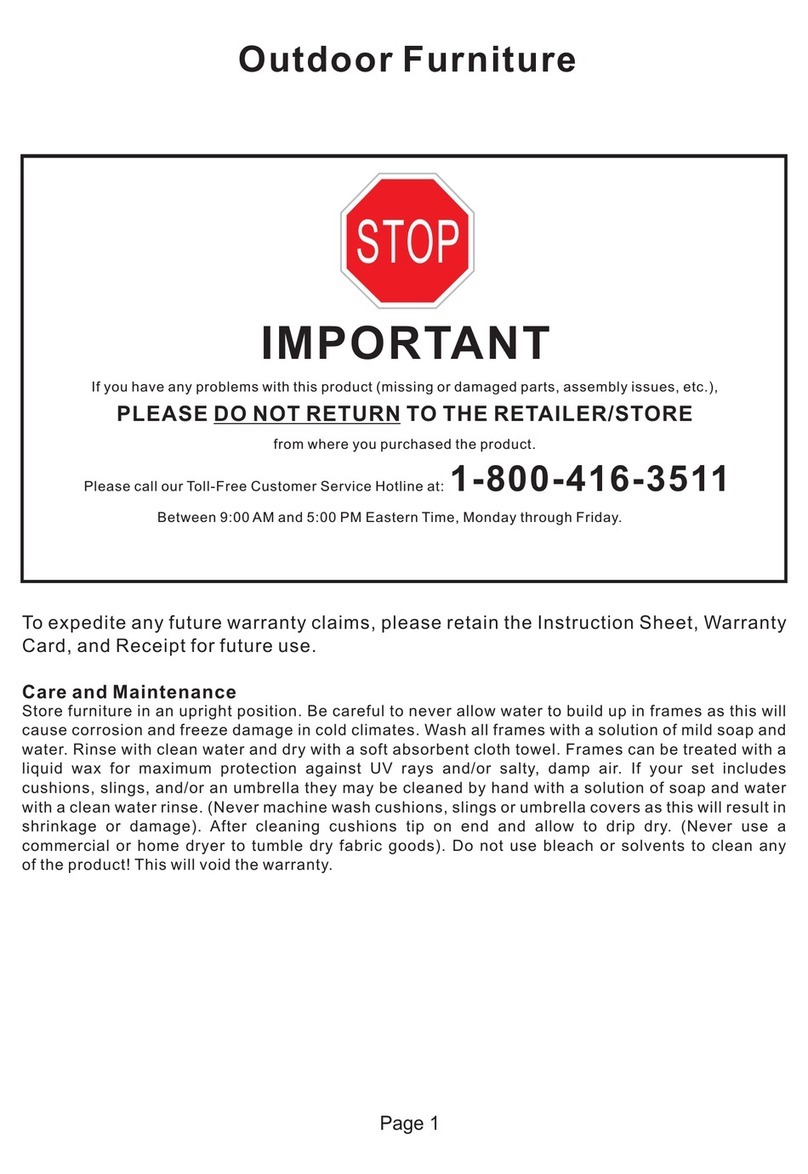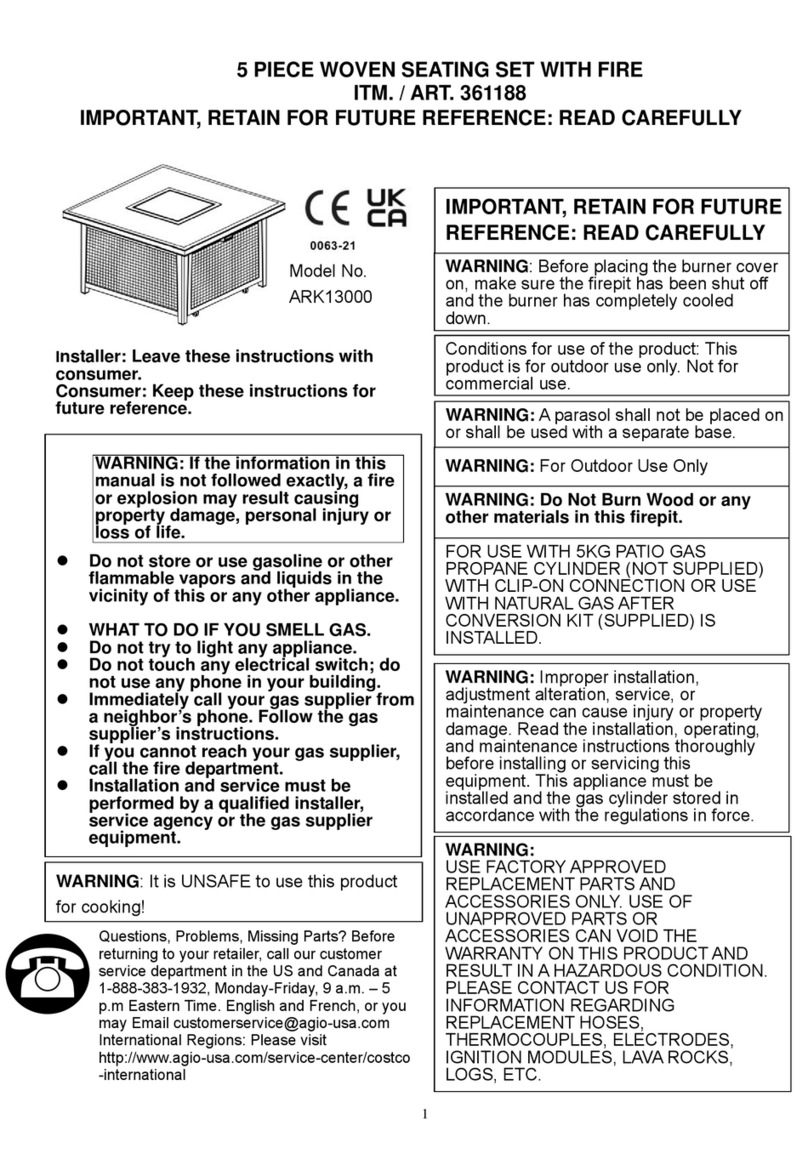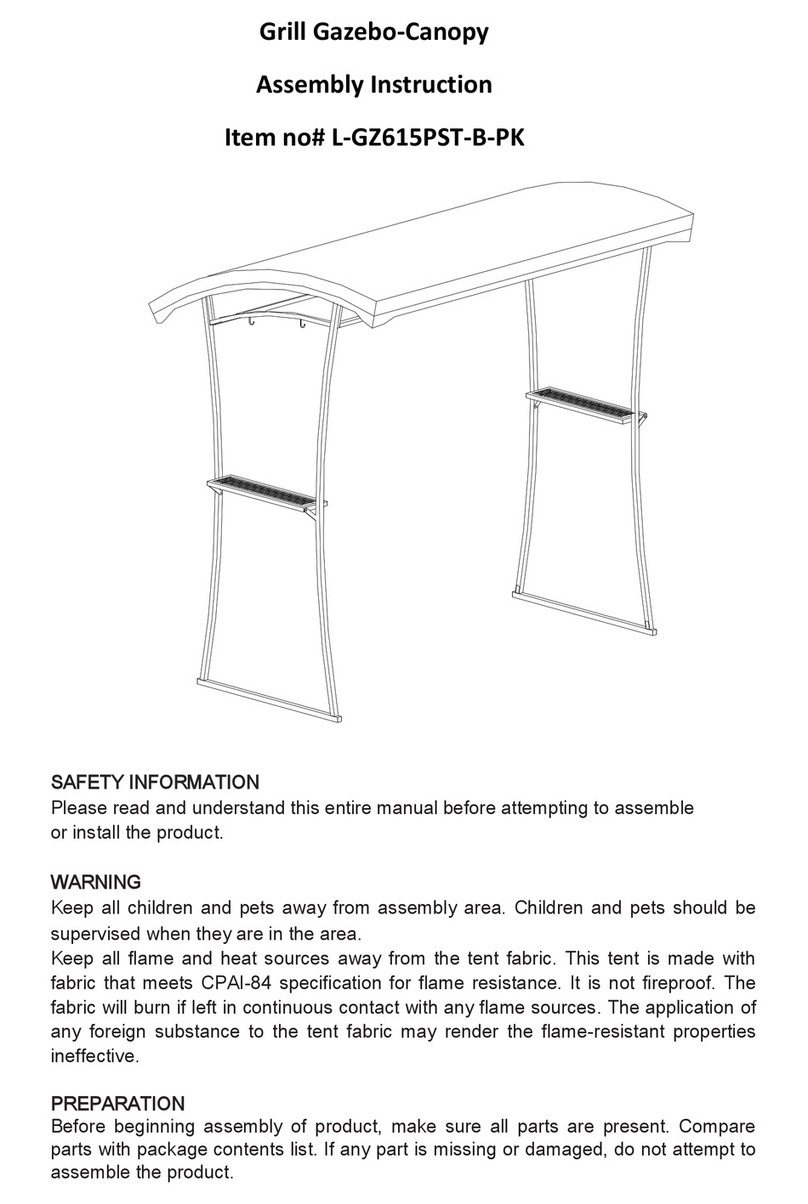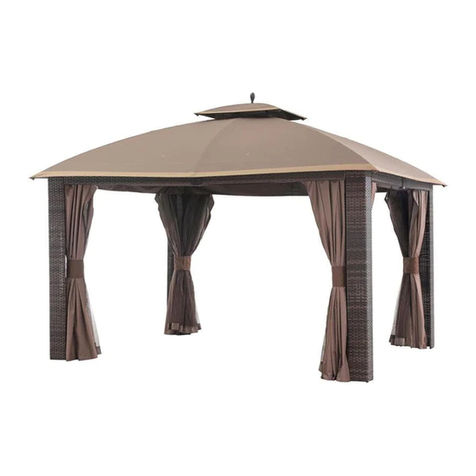Design Within Reach Finn Outdoor Series User manual

Finn Outdoor Collection
Designed by Norm Architects
Customer Service:
1.800.944.2233 inside the U.S.
1.203.614.0750 outside the U.S.
1 WWW.DWR.COM | 1.800.944.2233 | DESIGN WITHIN REACH STUDIOS
SIDE TABLE COFFEE TABLE DINING TABLE
OTTOMAN
CHAISE
LOUNGE CHAIR
TWO-SEATER SOFA THREE-SEATER SOFA
DINING CHAIR

Finn Outdoor Collection
Designed by Norm Architects
Customer Service:
1.800.944.2233 inside the U.S.
1.203.614.0750 outside the U.S.
2 WWW.DWR.COM | 1.800.944.2233 | DESIGN WITHIN REACH STUDIOS
CARING FOR TEAK
Left to age naturally outside, teak will gradually
change in color to a soft silver-grey as the
pigments in the surface layer of the wood begin
to fade away. We recommend that you allow your
teak furniture to weather naturally this way and
simply clean it thoroughly once or twice a year.
Teak furniture may also benefit from an occasional
light sanding to remove any raised grain and
restore a smooth finish to the surface. Included
you will find a wooden block and sanding tool to
do so. Under no circumstances should a power
washer be used to clean teak furniture. If you
wish to retain the gold-brown color of new teak,
you may choose to oil it. Oiling your teak furniture
will not affect its strength or longevity in any way,
just its appearance. If you elect to oil your teak,
you will be embarking on a regular maintenance
program because oil needs to be regularly
reapplied to provide continuous protection.
This will also void the DWR one-year warranty.
CARING FOR MESH
It is important to use a nonfoaming cleaner on
slings. Foaming product will leave residue in
the gaps between the weave, which will then
attract dirt. A pressure washer should not be used
because it may damage the fabric. Apply cleaner
with a soft cloth or sponge. Brush the furniture
clean with a soft scrubbing pad and water, then
rinse well. Severely stained surfaces may require
a second treatment.
CARING FOR STAINLESS STEEL
Stainless steel is the generic term for a number
of steels used primarily for their resistance to
corrosion. But as with any item left permanently
outdoors, stainless steel parts require regular
maintenance to stay looking new. The surface
of stainless steel is susceptible to the effects of
salt water and airborne chemicals, which may
result in small brown spots appearing on the
surface. These spots do not affect the strength,
integrity or longevity of the furniture; they are
simply superficial discolorations that require
some cleaning.
Cleaning:
•If brown spots appear on the stainless steel
surface, they can be removed by gentle rubbing
with a nonabrasive kitchen scrub pad in the
direction of the finish.
•If the spots are allowed to build up, it may
become necessary to use a stainless steel
cleaner for removal.
•Do not use bleach or any other cleaners
containing chlorine.
•Do not use abrasive cloths or pads, which
can dull the finish. Do not use steel wool or
steel wool pads because they may lodge fine
particles in the stainless steel surface that will
eventually rust.
CARING FOR CUSHIONS
One of the best ways to keep outdoor fabrics
looking good and to delay deep cleanings is
to properly maintain the fabrics. This can be
accomplished by simply brushing off dirt before
it becomes embedded, wiping up spills as soon
as they occur and spot-cleaning soon after stains
occur. Do not iron or dry clean. To keep cushions
looking their best, bring them inside when not in
use. Cushion covers should always be removed
from their filling prior to any cleaning.
General or light cleaning:
1. Brush off any loose dirt.
2. Prepare a cleaning solution of 2 ounces
(¼ cup) mild detergent, such as Woolite®
laundry detergent or Dawn®dishwashing
liquid per gallon of lukewarm water.
3. Use a sponge or a soft bristle brush to clean.
4. Allow cleaning solution to soak into fabric.
5. Rinse thoroughly to completely remove
all detergent residue.
6. Allow fabric to air-dry.
Machine washing:
1. Machine wash on cold setting using the
recommended amount of mild detergent.
2. Allow fabric to air-dry.
Care Instructions

Finn Outdoor Collection
Designed by Norm Architects
Customer Service:
1.800.944.2233 inside the U.S.
1.203.614.0750 outside the U.S.
3 WWW.DWR.COM | 1.800.944.2233 | DESIGN WITHIN REACH STUDIOS
Dining Table: Top Attachment
NO BOLT
NO BOLT NO BOLT
NO BOLT
START WITH
CENTER BOLTS
3. 4.
1. Insert metal alignment posts into holes in top of table base
to prepare for tabletop attachment.
2. Place tabletop on soft padded surface, top side down.
Flip table base upside down and lower onto tabletop,
aligning posts with corresponding holes in base.
Insert first four bolts in center holes of table assembly and loosely tighten, then
do same with remaining six bolts in outer holes. Again working outward from
center, gradually tighten screws in turn until all are firmly seated.
Turn over table and position where desired.
Bolts (x10)
Allen Wrench (x1)
Metal Posts (x14)
Hardware Checklist

Finn Outdoor Collection
Designed by Norm Architects
Customer Service:
1.800.944.2233 inside the U.S.
1.203.614.0750 outside the U.S.
4 WWW.DWR.COM | 1.800.944.2233 | DESIGN WITHIN REACH STUDIOS
METAL POST
Coffee and Side Table: Top Attachment
Insert all metal posts into predrilled holes in base. Set tabletop in
place, aligning with posts. Bolt tabletop to base from underside
with one bolt for each metal post. Do not overtighten bolts.
Bolts (x4)
Allen Wrench (x1)
Metal Posts (x4)
Hardware Checklist

Finn Outdoor Collection
Designed by Norm Architects
Customer Service:
1.800.944.2233 inside the U.S.
1.203.614.0750 outside the U.S.
5 WWW.DWR.COM | 1.800.944.2233 | DESIGN WITHIN REACH STUDIOS
Lounge Chair: Cushion Attachment
Position cushions on seat and back, making sure zippers are
facing inward. To attach, pull straps over the edges of the mesh
and around the seat and back. Do not wrap the straps around
the wood. Connect straps by using Velcro on their ends.
Table of contents
Popular Outdoor Furnishing manuals by other brands
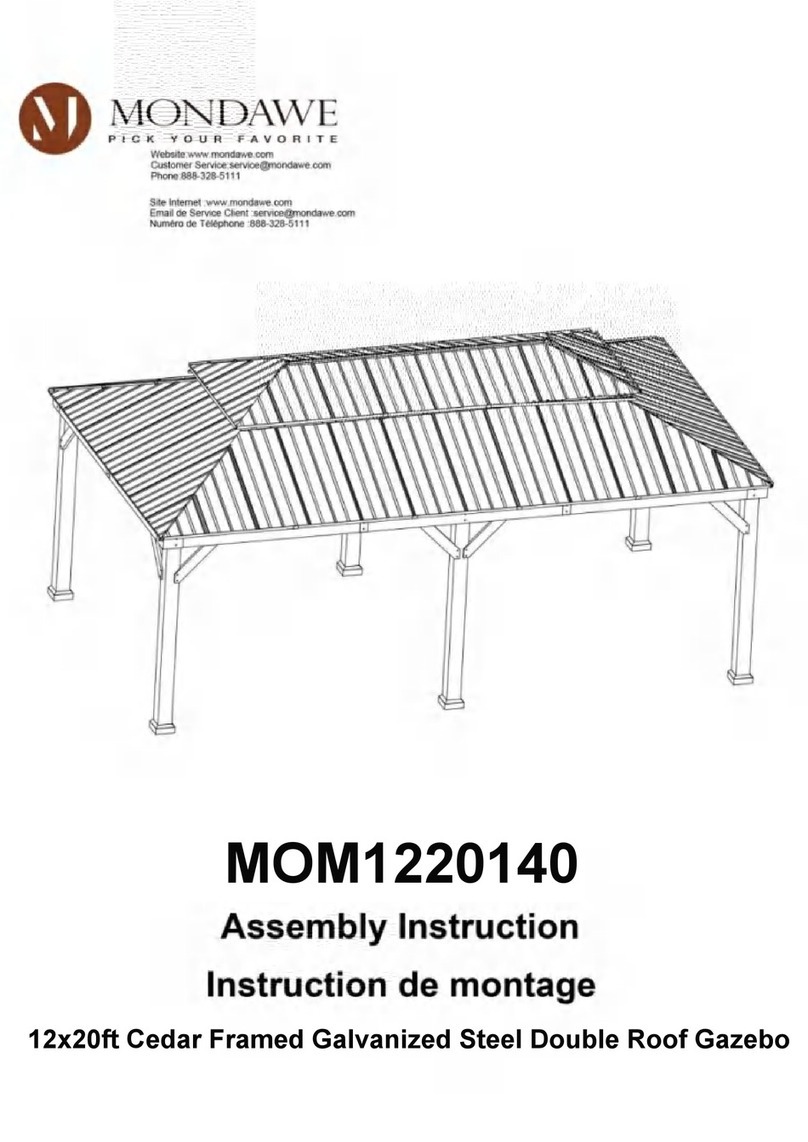
MONDAWE
MONDAWE MOM1220140 Assembly instruction
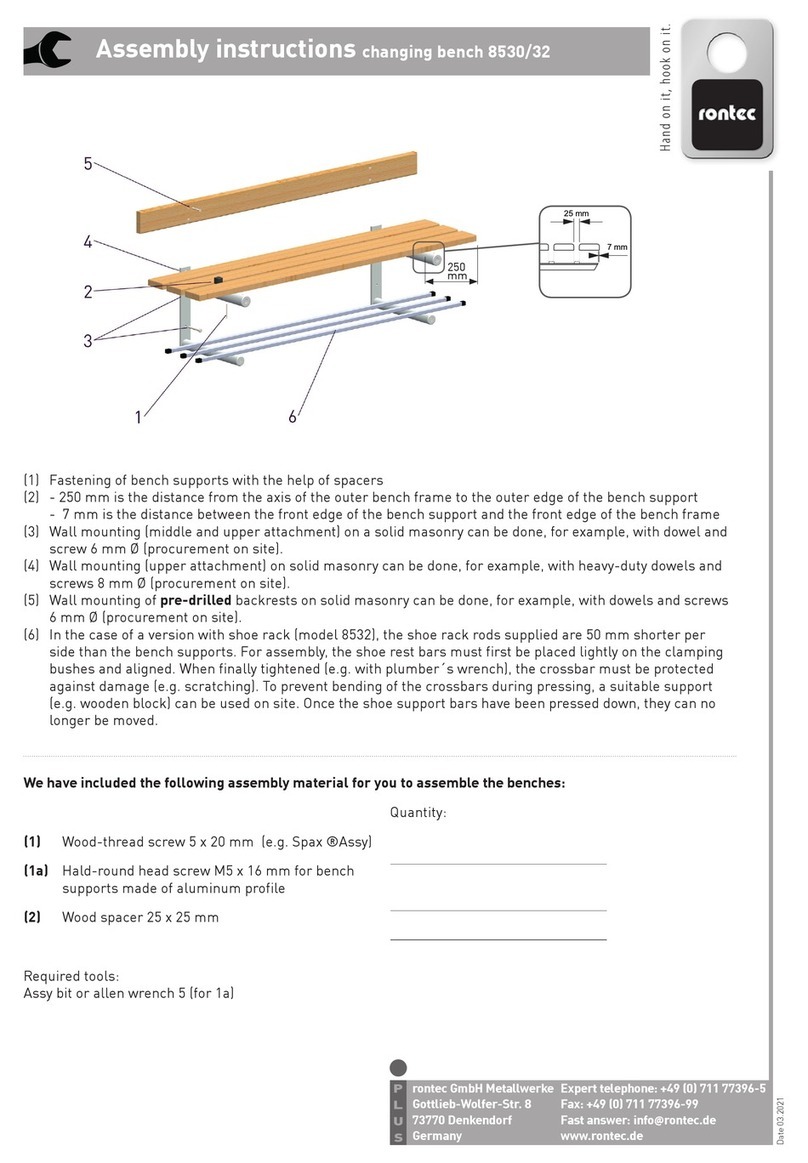
rontec
rontec 8530 Assembly instructions

Gutta
Gutta Timber 160 Assembly instructions
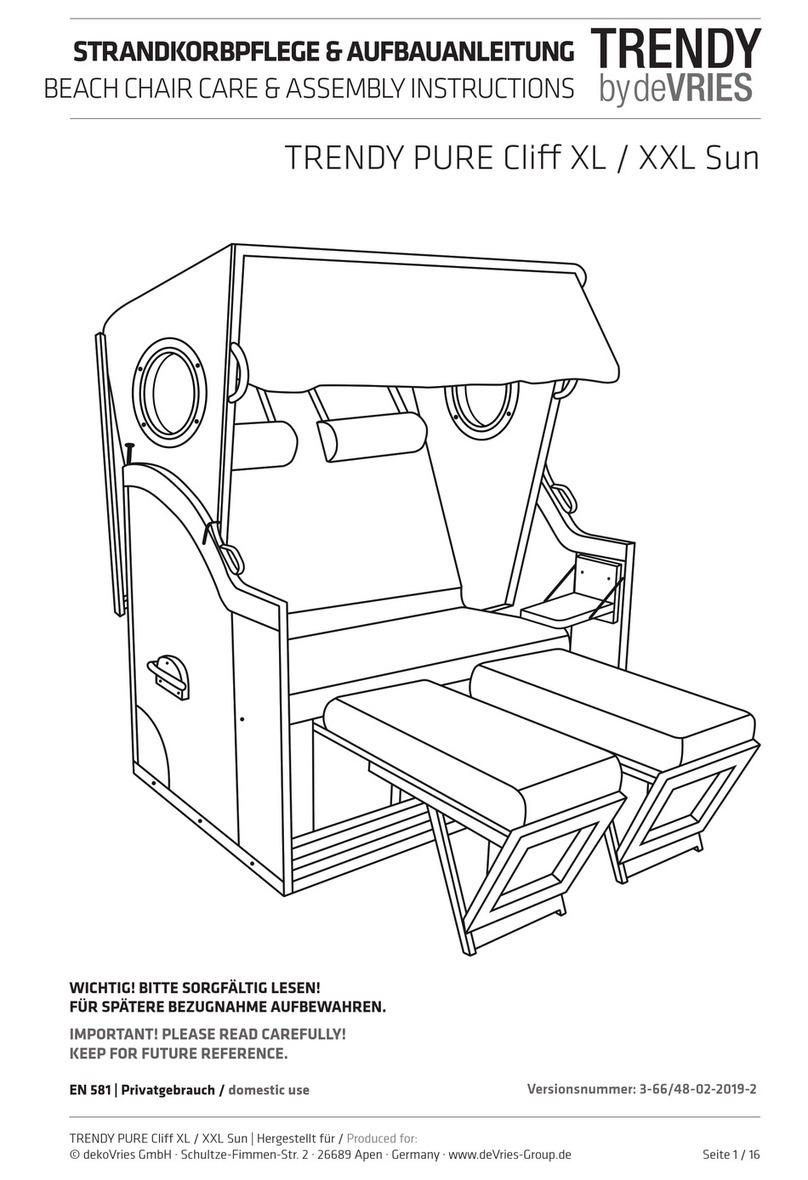
deVRIES
deVRIES Trendy PURE Cliff XL Sun Care & assembly instructions
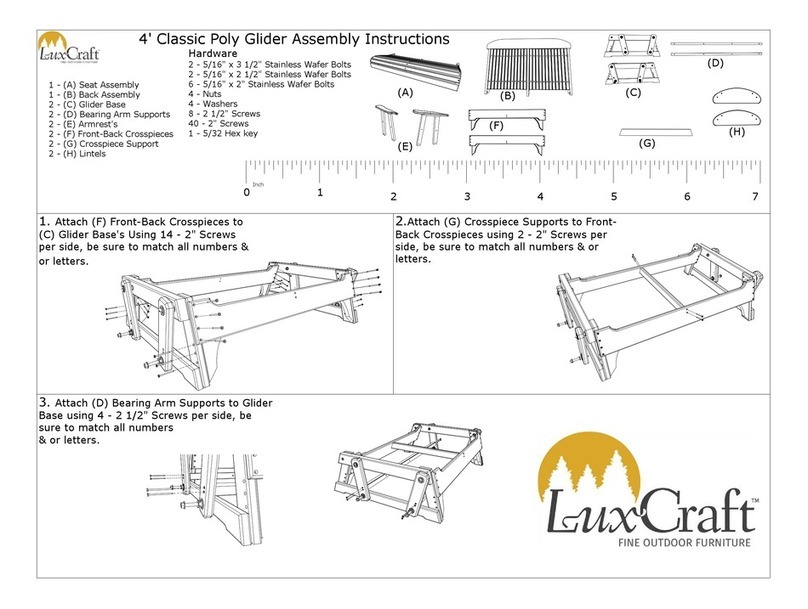
LuxCraft
LuxCraft 4' Classic Poly Glider Assembly instructions
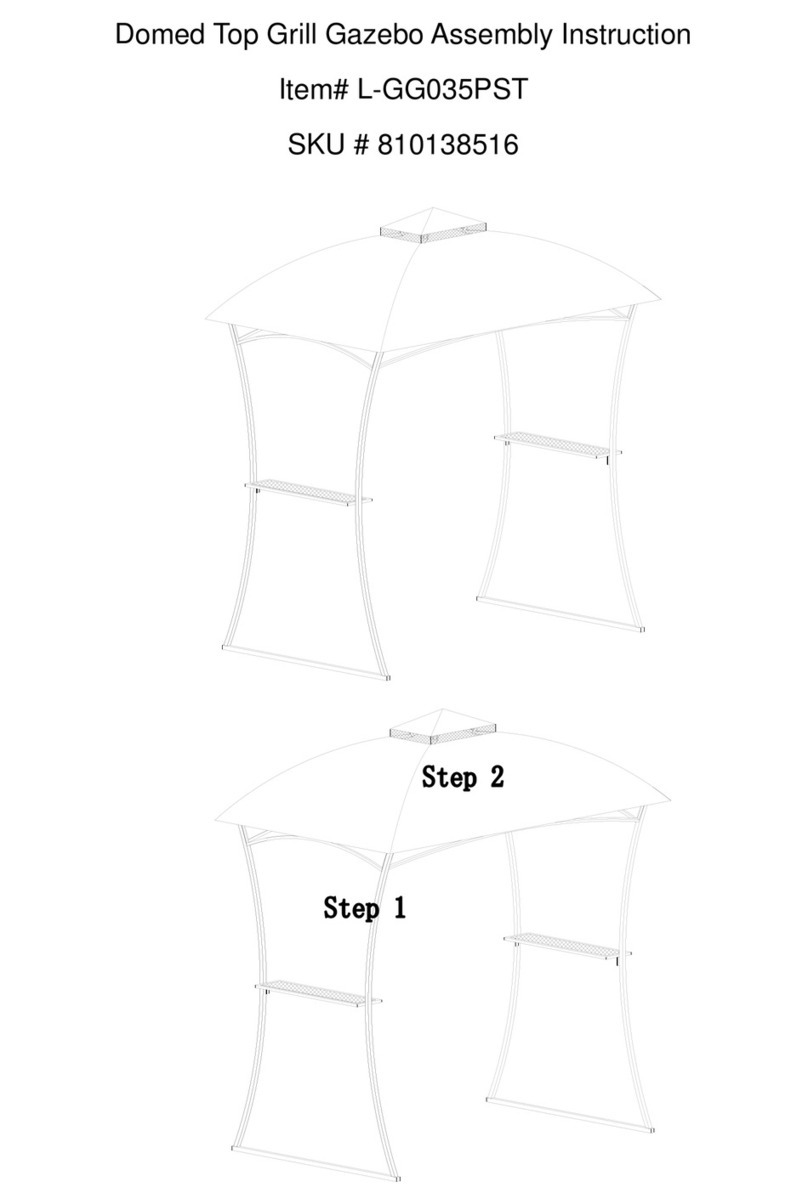
Sunjoy
Sunjoy L-GG035PST Assembly instruction
